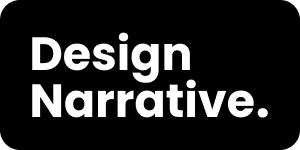Imagine your (redesigned) website looks exceptional with strong branding, a sleek layout, polished visuals, and appealing product images. Yet, conversions are underwhelming. What went wrong? The answer often lies in prioritizing aesthetics over performance. From my experience as a UX designer, I’ve seen many designs that look impressive but fail to deliver results. Companies that embrace a performance-driven design approach transform their outcomes.
Performance-driven design focuses not just on aesthetics but on creating a seamless, efficient user experience that drives measurable business results.
This article explores how prioritizing performance in UX design can lead to higher conversions, improved customer loyalty, and ultimately stronger business outcomes.
What is Performance-Driven Design?
Performance-driven design is a UX approach focused on optimizing performance metrics (like conversion rates, click-through rates, and task success rates) to achieve business goals.
While traditional UX focuses on user emotions, needs, and satisfaction, performance-driven design emphasizes measurable outcomes and continuously optimizes products to meet specific objectives. It connects design efforts directly to business metrics that impact the bottom line.
Key Metrics That Drive Business Growth
Here are a few performance metrics crucial for business success:
1. Conversion Rate
Recently, I worked with a client in the electronics e-commerce industry to improve the conversion rate on their shopping cart page. By reorganizing the UI—creating a more structured layout, distinguishing product tiles from the order summary, incorporating compelling USPs, and reducing distractions on a single screen—we achieved an impressive 200% increase in conversions.
2. Retention Rate
Focusing on a seamless experience for returning customers, such as recognizing them by name and offering a more personalized experience tailored to their needs, helps reduce churn and increase customer lifetime value.
Example: Making it easier for returning customers to view their past purchases and reorder them effortlessly is far more convenient than requiring them to search for the same item again.
3. User Engagement
Metrics like session duration and scroll depth indicate strong user engagement. For instance, if a customer spends time on an article or blog that explains how and where to use your product and scrolls further down the page to explore the rest of the content, it reflects engagement.
By leveraging this metric, you can guide users from being first-time buyers to loyal customers and eventually brand ambassadors. This process is also known as the customer lifecycle.
4. Task Completion Time
Reducing the time required to complete the checkout process creates smoother experiences and higher customer satisfaction, directly impacting conversion rates.
Example: By improving the experience—making it easier to fill out details, select delivery times, and complete payments—the conversion rate can be significantly increased.
Business Benefits of Performance-Driven Design
1. Increased Sales
An intuitive design makes it easy for users to find what they’re looking for and check out quickly, resulting in higher conversion rates. Well-placed call-to-actions boost the click-through rate (CTR), while strategic recommendations during checkout increase the average order value (AOV).
Performance-driven design creates an efficient and enjoyable experience that not only convinces customers to make a purchase but also encourages them to return, directly contributing to revenue growth.
2. Enhanced Customer Loyalty
A great user experience strengthens customer loyalty by reducing friction and providing convenience. When customers can quickly find what they need and check out effortlessly, they feel understood and valued. This increases the likelihood of them returning and recommending your brand to others.
Performance-driven design fosters a lasting relationship between the brand and its customers, resulting in repeat purchases and long-term engagement.
3. Cost Reduction
A well-designed UX can lead to significant cost savings by reducing the need for customer support. When products and services are intuitive and easy to use, customers require less assistance to resolve issues or ask questions.
This not only decreases the workload for the support team but also lowers the operational costs associated with customer interactions. Customers can navigate independently and experience less frustration, contributing to a positive brand experience while enabling more efficient business operations.
4. Stronger Brand Credibility
A well-thought-out UX design enhances a brand’s credibility by leaving a professional and reliable impression. When customers can navigate effortlessly and enjoy a consistent, error-free experience, their trust in the brand grows.
A user-friendly interface demonstrates care and attention to customer needs, strengthening brand value and giving customers a reason to return. Additionally, a smooth experience encourages customers to share positive reviews and recommend the brand to others, further boosting its credibility.
Steps to Implement Performance-Driven Design
1. Define Clear Goals and Metrics
A strong start sets the stage for success. Begin by defining goals that are not only ambitious but also achievable. Ensure these goals align with your business objectives, such as increasing conversion rates, enhancing customer loyalty, or boosting average order value (AOV). Consider KPIs based on specific questions like:
- How much faster do we want to guide customers through the purchase process?
- What is the minimum churn percentage we aim to reduce?
Tip: Make your goals specific and back them up with solid data. For example: “We aim to increase the conversion rate of our product pages from 2% to 3% within three months.”
2. User Testing and Data Collection
Customers often won’t tell you what’s going wrong, but their behavior will. Use a mix of qualitative and quantitative methods to identify pain points. These can include user testing, customer interviews, heatmaps, and analytics data. This approach provides a clear picture of where customers drop off or experience frustration.
Qualitative Approach
Have users complete tasks and observe how they navigate your product. What do they struggle to understand? Where do they get stuck?
Quantitative Approach
Analyze data like bounce rates, exit rates, and session duration to identify underperforming pages.
Example: If many users abandon the payment page, it could indicate complexity in the form or a lack of trust.
3. A/B Testing and Iteration
Effective design decisions are driven by data, not assumptions. Conduct A/B testing to compare design variations and identify which performs best. Use these insights to implement iterative improvements.
Focus on Quick Wins
Start with small, easily implementable changes, such as adjusting button colors or rewriting call-to-actions.
Long-Term Optimizations
Test larger changes, like redesigning navigation or product pages.
Example: Try a new layout for your product page where customer reviews are more prominently displayed. Compare this version with the original page and measure its impact on conversions.
4. Optimize for Speed and Usability
Improvements such as faster load times and simpler interfaces greatly enhance the user experience.
5. Monitor and Adapt Continuously
Make UX optimization an ongoing process, using data insights to refine designs over time.
Why Performance-Driven Design is the Future of Business Growth
Design without data is subjective and prone to personal preferences. To maximize the efficiency of design and development efforts, it’s essential to make design measurable by linking it to tangible results. Design decisions should be backed by factual information rather than gut feelings or subjective opinions like “I just don’t like it.”
Data-Driven Decisions
Companies that base their design decisions on data are better positioned to meet customer expectations. This approach avoids reliance on gut feelings or other unverifiable factors, leading to a more consistent and unified alignment across teams.
Agility and Adaptability
Performance-driven design empowers businesses to remain competitive and quickly respond to user needs and market changes. By zooming in on metrics throughout the entire user journey, businesses can identify and implement the key improvements that drive performance.
Sustainable Growth
By creating a user experience that consistently delivers results and is tied to measurable metrics, businesses can ensure long-term growth and foster brand loyalty.
“In today’s fast-paced digital world, where users have endless options, delivering a performance-driven experience is no longer optional—it’s essential to stay ahead."
Transform Your Digital Strategy with Performance-Driven Design
As a business leader, entrepreneur, or head of Product, you understand the necessity of a digital strategy that delivers results. Performance-driven design provides a proven approach to support your business goals by focusing on what truly matters: conversions, customer loyalty, and measurable growth.
Combining a data-driven mindset with UX design enables your business to operate faster, more efficiently, and with greater focus. Companies that adopt this strategy not only stay relevant but also achieve sustainable growth in a competitive market.
It’s not just about creating a beautiful experience for your customers; it’s about delivering one that visibly improves your business results.
Take the First Step Toward Measurable Success Today
Are you ready to elevate your digital products and strategy? Contact Design Narrative to discover how we can enhance your performance through a focus on performance-driven design.
Get in touch now and let us help transform your business outcomes.


